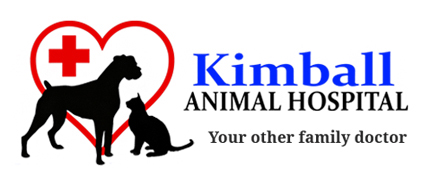Library
-
With all cancer management strategies, providing optimal nutrition for your cat is essential. The metabolic effects of cancer will persist after treatment but with your veterinarian’s guidance, you can adjust your cat's nutrient profile and potentially avoid some of these negative side effects. Carbohydrates promote cancer cell growth, while cancer cells have a difficult time using fat as an energy source, so foods that are relatively high in fat and low in carbohydrate may benefit cats with cancer. The effects of surgery, chemotherapy, and radiation therapy will be considered when your veterinarian advises a nutrient profile, formulation, quantity, and delivery method for your cat.
-
With all cancer management strategies, providing optimal nutrition for your dog is essential. The metabolic effects of cancer will persist after treatment but with your veterinarian’s guidance, you can adjust your dog’s nutrient profile and potentially avoid some of these negative side effects. Carbohydrates promote cancer cell growth, while cancer cells have a difficult time using fat as an energy source, so foods that are relatively high in fat and low in carbohydrate may benefit dogs with cancer. The effects of surgery, chemotherapy, and radiation therapy will be considered when your veterinarian advises a nutrient profile, formulation, quantity, and delivery method for your dog.
-
Once your cat has reached adulthood, their nutrient profile will change from when they were a kitten. Your veterinarian can help you determine what proportion of each nutrient is needed based on your cat's lifestyle and current body condition. It is important to lay a good nutritional foundation to maximize the health and longevity for your cat and reduce the potential for developing obesity.
-
Once your dog reaches adulthood, his nutrient profile changes from when he was a puppy. Your veterinarian can help you determine what proportion of each nutrient is needed based on your dog’s lifestyle and current body condition. Avoid free-feeding and work on a meal schedule. Following these steps can help your dog lead a healthier life and avoid becoming overweight or obese.
-
Alveolar osteitis, also called expansile osteitis, is a relatively common condition that results from chronic periodontal disease in cats. It is painful and can interfere with grooming and eating. If this disorder is detected early, it may be possible to treat the disease without tooth extraction by performing thorough periodontal therapy (dental cleaning and scaling).
-
Feline calicivirus is a virus that is an important cause of upper respiratory infections and oral disease in cats. The typical clinical signs of an upper respiratory infection involve the nose and throat such as sneezing, nasal congestion, conjunctivitis, and discharge from the nose or eyes. Calicivirus is highly contagious and infected cats can shed the virus in saliva or secretions from the nose or eyes. The standard core vaccines that are given to cats include immunization against calicivirus and will help reduce the severity of disease and shorten the length of the illness if your cat is exposed.
-
Demodicosis is a parasitic skin condition caused by Demodex mites. These microscopic mites can be found on the skin of all animals but, in some cases, they multiply to excessive levels and cause clinical signs. Signs vary depending on the species of mite involved, though generally involve hair loss, skin inflammation, and crusting. Demodex mites found on cats and dogs do not spread to humans.
-
Feline herpes viral conjunctivitis is a form of primary conjunctivitis caused by the highly infectious feline herpesvirus (FHV-1), which is the most common cause of conjunctivitis in cats. This handout outlines the clinical signs, diagnosis, treatment, and prognosis for affected cats.
-
This handout provides information on Feline Immunodeficiency Virus (FIV) in cats. Included is information on how the disease is transmitted, the clinical signs, the recommendations for isolation of the infected cats, and potential treatment guidelines should your cat be infected with this virus.
-
FIP results from a mutation of Feline Enteric Coronavirus. Many of the clinical signs of FIP are vague and occur with other diseases found in cats. Most cats will develop the wet or effusive form of FIP, which refers to the accumulation of fluid in body cavities. Unfortunately, there are no laboratory tests available that can distinguish between the enteric coronavirus and the FIP-causing strains. Supportive treatments may extend longevity and improve quality of life. New treatments showing success are still under evaluation.

